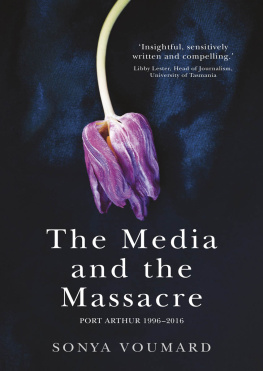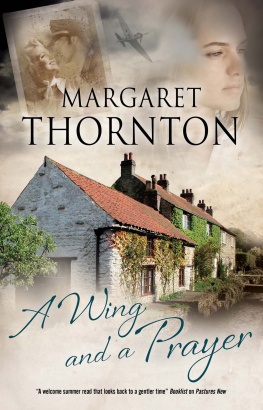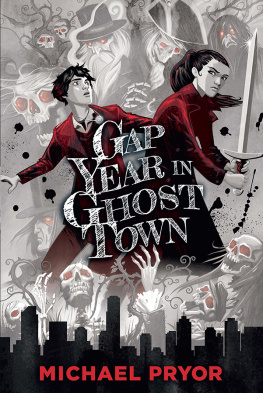The Media
and the
Massacre
PORT ARTHUR 19962016
The Media and the Massacre
Port Arthur 19962016
SONYA VOUMARD


MELBOURNE, AUSTRALIA
www.transitlounge.com.au
Copyright Sonya Voumard 2016
First Published 2016
Transit Lounge Publishing
This book is copyright. Apart from any fair dealing for the purpose of private study,
research, criticism or review, as permitted under the Copyright Act, no part may be
reproduced by any process without written permission. Inquiries should be made to
the publisher.
Front cover image: Liz Dalziel / Trevillion Images
Cover and book design: Peter Lo
Printed in Australia by McPhersons Printing Group
A cataloguing- entry is available from the
National Library of Australia: http://catalogue.nla.gov.au
ISBN: 978-0-9943957-2-6 (e-book)
For those without a voice
Important note:
While this work draws inspiration regarding writers ethical and moral dilemmas from the works of Janet Malcolm, and in particular The Journalist and the Murderer, the author in no way suggests a specific comparison between the obvious, premeditated conduct of journalist Joe McGinniss in that text and the circumstances, including its authors conduct, surrounding the book Born or Bred?
We imagine evil is other than human, beyond understanding, almost mystical. This lets us off the hook, lets us deny our own capacity for evil, and stops us from analyzing the very human, very common causes of it.
James Dawes, Evil Men
On Sunday, 28 April 1996, a 29-year-old man, armed with high-powered guns, drove to a home near Port Arthur in Tasmania where he shot and killed a local couple. He then drove to the nearby Port Arthur historic site of the nineteenth-century convict settlement and began firing on the tourist crowds. A total of 35 people were killed and 21 injured in what was then the worlds worst civilian massacre.
The shooters name was Martin Bryant. He is the son of Carleen Bryant and her late husband, Maurice. In the Supreme Court of Tasmania on 22 November 1996, Bryant was sentenced to 1035 years without parole for his crimes, having pleaded guilty. He is serving his sentence in Risdon Prison, near Hobart.
Prologue
The footage is raw. To view it is to sense the chaos of that autumn Sunday afternoon in April 1996. It is to remember what it felt like to not-yet-know. Journalists thrust notebooks and microphones through the car windows of stunned survivors. Just past the police roadblock on the road out of Port Arthur they give eyewitness accounts, fragments of a tragedy thats still unfolding as they speak. One tells of a man muttering about car parks, wasps and Japs. He had a sports bag, a semiautomatic rifle, other weapons. There were gunshots in quick succession, then bodies, the walking wounded.
I spool through the archival Channel Nine footage to hear Port Arthur massacre survivor Wendy Scurr tell a press conference, held later, how she dialed triple-0. For Gods sake get help here, she said. Theyre killing everyone. She was distressed that the emergency call centre staff might not believe her. Luckily they did. Go. Look after yourself, they told her once they had what they needed. With the wild-eyed stare of shock still in her face, she told the media: We felt like rabbits in a hunt.
When it seemed to be over, Scurr went into the Broad Arrow Caf and began helping those few who could still be helped. A volunteer ambulance driver, she knew about triage. She also knew where the bandages were, but tea towels were better for the job that needed doing. She worked to keep victims airways open. Relatives of the dead helped out with the living. Somebody made cups of tea. Word travelled fast. Phones went crazy in newsrooms everywhere. In Hobart, the injured were rushed from whirring choppers to waiting ambulances. Bloodied men and women with bandages, intravenous drips and exposed torso flesh lay on stretchers, carried by two or three or four people on the run. Children gawked from bicycles. It was the afternoon of Sunday, 28 April 1996: a day many Australians remember exactly where they were when they first heard the news that something very bad had happened in the island state. The Port Arthur massacre.
I was in my home office, working on a story for the Sydney Morning Heralds suddenly so unimportant arts pages, when the story broke. The commotion and chatter I could hear from the busy street outside sounded strangely different. Something made me turn on the television and watch for news updates. Details emerged of the horror, at the end of which 35 lay dead and at least 21 wounded.
* * *
Age journalist Bill Birnbauer was playing kick-to-kick footy with his daughter at an oval near his home in the Melbourne suburb of Blackburn that Sunday afternoon. His wife came running across the road with an urgent message from work. A gunman was running amok at Port Arthur in Tasmania. He had to get into the office. Fast.
* * *
As a newspaper reporter, I often used to work on Sundays. If it had happened a year earlier, I might have gone to Tasmania to cover the events of that autumn afternoon. But after 15 years as an on-staff newspaper reporter for Australias biggest media companies, Id quit the newsroom and given up my regular pay cheque, financial insecurity the price of freedom, to freelance in May 1995. The idealism with which Id entered journalism, aged 18, fresh out of school in 1980, had gone. Cynicism took its place. Id stopped believing in the job I once loved.
* * *
Bill Birnbauer listened to the car radio as he drove in to work. By then, the gunman was holed up near Port Arthur at the Seascape guesthouse. He had hostages. In the newsroom, the veteran journo hit the phones. He called all the numbers he could businesses, homes, hotels in the area. He got onto the Fox and Hounds Inn. A witness told him blood-soaked victims had sheltered there before being taken away in ambulances. Helicopters were flying overhead. Police were everywhere. Birnbauer found the phone number of the Seascape guesthouse. He stared at the hasty scribble of it in his notebook, tossed up whether to call.
* * *
In 1991, as the Sydney correspondent for The Age, Id covered the aftermath of the Strathfield massacre, in which lone gunman Wade Frankum shot eight people dead, wounded six more and then shot himself in the head as police arrived at the suburban shopping mall. I knew from close up about blood-stained footpaths, loners with guns, stories of the lucky and the not-so that make you shake with fear and excitement. After that rampage, Id peered through the window of Frankums ground-floor unit; Id talked to his neighbours, whose broken English I fixed and then quoted. The piece, co-written with a colleague, ran on page 1 of The Age. There was a radio debate about the photograph with it: a full-colour shot of Frankum, dead in a pool of blood. I felt alive. For a journalist, the adrenaline like the heart surge triggered by a new lover kicks right through your guts as soon as a big story breaks. Subconsciously you draw a line from yourself to that story. Theres always a part of you that yearns to be there. You want to run towards the disaster, find the source and write the pain.
* * *
Birnbauers mind was racing. He wondered what hed say if he dialed the Seascape number and got onto the gunman. Why dont you give yourself up? Whyd you do it? But he worried about tying up a phone line the cops might need to get through. Lives might be in the balance. He decided not to call. He wrote what he had. It appeared on page 3. Later he would wonder what would have happened if he had made the call.
Next page









